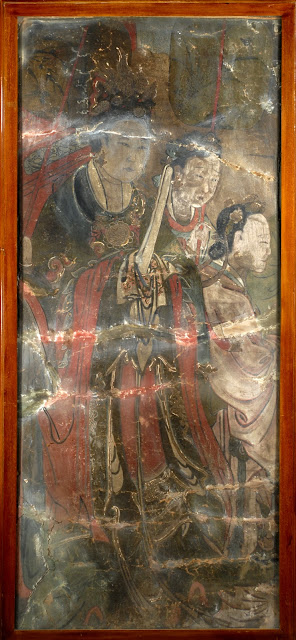First - ask lots of questions. Everyone has been very helpful and I have made lots of lists.
Second - What do you want your exhibition to be about? Obviously, I'm working on the Skin Deep Project with the bird skin collection, so that narrows it down a little, but there are many subjects that could be explored that it's hard to pin down. I contacted the Learning & Access Officer and she said that at the moment schools are looking at: feeding, camouflage and extinct/endangered animals, which helps focus it a lot. I haven't decided which one I'm going to do yet, it will depend on what specimens I have, but it definitely narrows field a little.
Third - Setting up the case - First off, you have to consider the de-installation, what's in there at the moment? In that case we currently we have an exhibition on different types of seeds. These were loaned to us around 5 years ago and their owners have to be notified that we wish to return them, then the Conservator has to assess them to make sure that they are in the same condition now as they were when they arrived.
Fourth - Once I've decided what I want in there I have to choose how to display it. The case is tall, visible from all sides and currently has the seeds displayed on Perspex armatures that sick out from a central pillar in all directions. I will do something similar so once I have picked what specimens I want I have to get quotes from people that can make these special attachments. The objects need to be suspended in a way which shows them off to their best advantage whilst supporting them so that they don't get damaged over the long term, as they may very well be in there for the next 5 years.
Fifth - What information should go with them? There are a lot of facts that you can supply with any object but the majority of visitors are not going to stand for half an hour in front of a huge display of text, they have a lot to see and not much time to see it. You have to provide nuggets of information which people of all ages will find interesting and accessible whilst also accentuating the specimens in the case. Fortunately we also have 'more information' sheets which we provide with each display, so I will be able to go into a little more detail for those people that are more curious.
Sixth - And finally! You have the specimens, you have the labels, you have the display, then you have to install it. As it's only one small case we will carry out a quick change in one day so there is as little disruption to the gallery as possible. The old display and seeds will be packed up in preparation to be put in the quarantine freezer (to kill any bugs that might have got in) and then all the new stuff will slot into place (hopefully).
Wish me luck! As mentioned in the title, I am a beginner, so this entry may well change as and when I learn that I've missed something out...





















